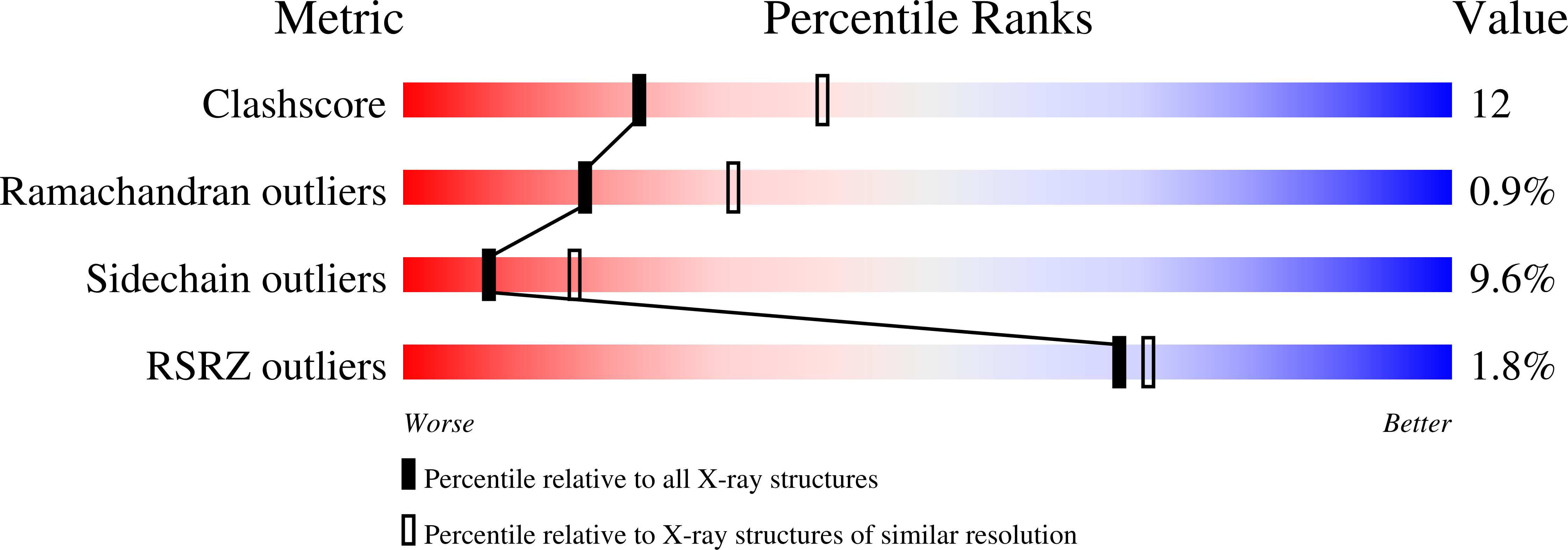Human cystatin C, an amyloidogenic protein, dimerizes through three-dimensional domain swapping.
Janowski, R., Kozak, M., Jankowska, E., Grzonka, Z., Grubb, A., Abrahamson, M., Jaskolski, M.(2001) Nat Struct Biol 8: 316-320
- PubMed: 11276250
- DOI: https://doi.org/10.1038/86188
- Primary Citation of Related Structures:
1G96 - PubMed Abstract:
The crystal structure of human cystatin C, a protein with amyloidogenic properties and a potent inhibitor of cysteine proteases, reveals how the protein refolds to produce very tight two-fold symmetric dimers while retaining the secondary structure of the monomeric form. The dimerization occurs through three-dimensional domain swapping, a mechanism for forming oligomeric proteins. The reconstituted monomer-like domains are similar to chicken cystatin except for one inhibitory loop that unfolds to form the 'open interface' of the dimer. The structure explains the tendency of human cystatin C to dimerize and suggests a mechanism for its aggregation in the brain arteries of elderly people with amyloid angiopathy. A more severe 'conformational disease' is associated with the L68Q mutant of human cystatin C, which causes massive amyloidosis, cerebral hemorrhage and death in young adults. The structure of the three-dimensional domain-swapped dimers shows how the L68Q mutation destabilizes the monomers and makes the partially unfolded intermediate less unstable. Higher aggregates may arise through the three-dimensional domain-swapping mechanism occurring in an open-ended fashion in which partially unfolded molecules are linked into infinite chains.
Organizational Affiliation:
Department of Crystallography, Faculty of Chemistry, A. Mickiewicz University, Grunwaldzka 6, 60-780 Poznan, Poland.
















